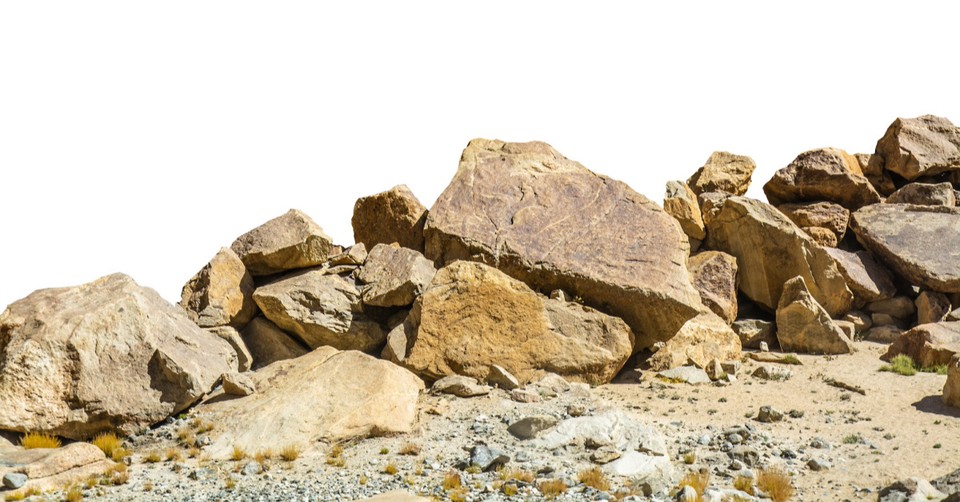The Rock Where the Ark of the Covenant Rested May Have Been Unearthed

Archaeologists in Israel have uncovered a temple-like structure and a large rock they say may be the one described in 1 Samuel – and if so, it would have played a role in the Ark of the Covenant that housed the Ten Commandments.
The team from Tel Aviv University digging near the Beth Shemesh site outside Jerusalem discovered a structure apart from the residential area that had sturdy walls and dates to the time of the biblical Israelites. They also found piles of animal bones.
“There is a lot of evidence that this was indeed a temple,” archaeologist Shlomo Bunimovitz of Tel Aviv University told Haaretz. “When you look at the structure and its content, it’s very clear that this is not a standard domestic space but something special.”
Yet it is the unusual rock – a huge stone slab resting on two rocks – that perplexed the archaeologists. Initially, the archaeologists believed it was a pillar that had fallen over.
“But soon we realized that it was meant to be a table,” archaeologist Zvi Lederman of Tel Aviv University told the newspaper.
The stone table resides inside the temple.
Both Bunimovitz and Lederman believe the table could have been a resting place for the Ark of the Covenant that is described in 1 Samuel. 1 Samuel 4-5 tells of the Philistines capturing the Ark of the Covenant but then being punished by God for having it in their possession. Then, in 1 Samuel 6:13-15, the Philistines return the Ark:
“Now the people of Beth Shemesh were harvesting their wheat in the valley, and when they looked up and saw the ark, they rejoiced at the sight. The cart came to the field of Joshua of Beth Shemesh, and there it stopped beside a large rock. The people chopped up the wood of the cart and sacrificed the cows as a burnt offering to the LORD. The Levites took down the ark of the LORD, together with the chest containing the gold objects, and placed them on the large rock. On that day the people of Beth Shemesh offered burnt offerings and made sacrifices to the LORD.”
This “large rock” is the one the archaeologists believe may be the stone table they uncovered. The Old Testament says the Ark of the Covenant was housed in the tabernacle and then in the Temple in Jerusalem – although it also, at one time, rested on a large rock. First Samuel 6:18 says, “The large rock on which the Levites set the ark of the LORD is a witness to this day in the field of Joshua of Beth Shemesh.”
“This would be a rare case in which we can merge the biblical narrative with an archaeological find,” Lederman told Haaretz.
There are other hints that the temple was viewed as special. Archaeologists say the temple was destroyed and covered with animal dung.
“Very shortly after it was destroyed, the entire place was turned into an animal pen,” Lederman said. “To me, this is an act of hostility, an intentional desecration of a holy place.”
Related:
Evidence of Babylonian Conquest of Jerusalem Unearthed … Just As the Bible Describes
Archaeological Evidence Points to Discovery of Biblical Kingdom of Edom
Netanyahu: New Philistine DNA Study Affirms that Israel Is Jewish Land
Archaeologists Unearth 2,600-Year-Old Link to Biblical King Josiah
Archaeologists May Have Found the Old Testament City of Ai
Archaeology: 3,000-Year-Old Sculpture Depicts a Biblical King, but Which One?
Top 7 Biblically Significant Archaeological Discoveries of 2018
Michael Foust is a freelance writer. Visit his blog, MichaelFoust.com.
Photo courtesy: ©Getty Images/Ekkawit998, this is a stock photo.
Michael Foust has covered the intersection of faith and news for 20 years. His stories have appeared in Baptist Press, Christianity Today, The Christian Post, the Leaf-Chronicle, the Toronto Star and the Knoxville News-Sentinel.
Listen to Michael's Podcast! He is the host of Crosswalk Talk, a podcast where he talks with Christian movie stars, musicians, directors, and more. Hear how famous Christian figures keep their faith a priority in Hollywood and discover the best Christian movies, books, television, and other entertainment. You can find Crosswalk Talk on LifeAudio.com, or subscribe on Apple or Spotify so you never miss an interview that will be sure to encourage your faith.
Originally published December 24, 2019.







